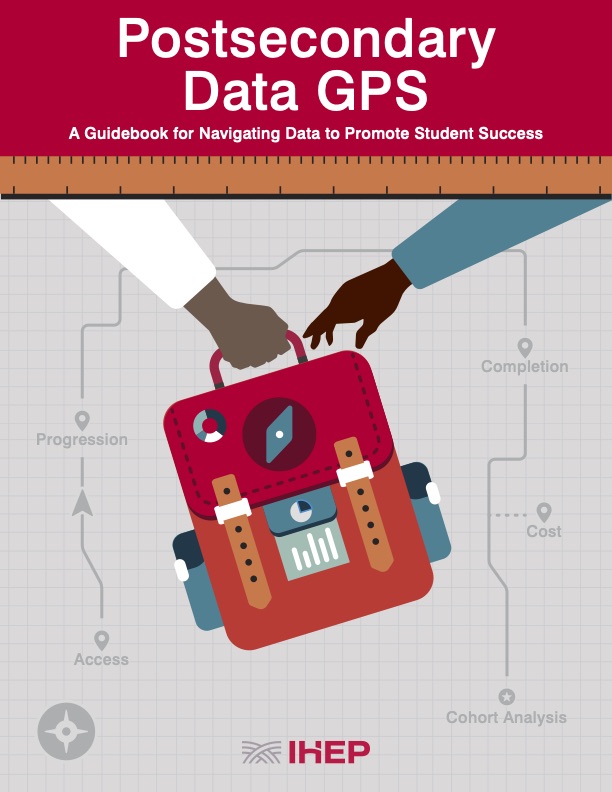
Dear Data Enthusiast:
While higher education has long been recognized as a pathway to a better life, too many of the very students who could gain the most from a college degree are left out, stop out, or drop out. Systemic barriers including inequitable and confusing admissions processes, regressive financial aid policies, and housing and food insecurity, all contribute to derailing students from the economic advantages offered by a postsecondary education. To tackle these systemic inequities, policy change must begin at the institutional level and it must put low-income students and students of color at the center.
The colleges and universities that have made the greatest gains in student outcomes and narrowed gaps between low-income students, students of color, and their peers invariably cite data as an essential tool that enabled their success. Inspired by these success stories, many institutions share that they want to use data more effectively but don’t know how to begin. This Metrics Framework Guidebook is designed to help institutions do just that: get started. It frames the key questions colleges should ask and offers tools and visualizations for institutions to use to inform their change management and student success efforts.
In 2016, the Institute for Higher Education Policy (IHEP) released Toward Convergence: A Technical Guide for the Postsecondary Metrics Framework, providing a set of detailed, field-driven postsecondary metrics built on lessons learned from a decade of state and voluntary data collection initiatives. The metrics in the Framework were developed directly from these initiatives’ efforts, which were created to fill the gaps left by federal collections. Toward Convergence defines the key performance, efficiency, and equity metrics that measure student access, progression, completion, cost, and post-college outcomes for all students.
A primary goal of the Framework is for institutions to use these metrics to guide internal improvement efforts and better serve all students, especially low-income students and students of color, on their campuses. However, institutions often cite that they do not have the capacity and resources to fully explore and use their data. Alongside this challenge, they sometimes fear that they have insufficient expertise to run complex statistical analyses and are unable to invest in new software.
Based on this feedback, IHEP has developed this Metrics Framework Guidebook as a free resource for institutions who are eager to begin using their data in truly meaningful ways. Designed for use by non-statisticians and statisticians alike, the Guidebook is intended to serve as an easy-to-access tool for a variety of offices across campus to quickly transform aggregate data into useful visualizations that uncover trends and issues in need of further exploration and to inform institutional change efforts. Ultimately, this tool should help institutions build a culture of data-informed inquiry to increase student success.
At the root of the development of the Framework is a belief that in order to promote equity and ensure success for all students, particularly those who have been underserved by our higher education systems, institutions and other policymakers must use data to understand how students are accessing, progressing, and succeeding at our institutions. Asking these questions about how students move through the postsecondary pipeline will help institutions to assess how well they are serving students and, ultimately, to improve.
We hope this inspires you and makes it easier to look beneath the surface and dig deeper into solving entrenched inequities within higher education.
Sincerely,
Michelle Asha Cooper

Postsecondary Data GPS
A Guidebook for Navigating Data to Promote Student Success
By Konrad Mugglestone, Amanda Janice Roberson, and Mamie Voight
Acknowledgements
The authors would like to acknowledge the many contributions needed to make this guidebook possible. First, we would like to thank the Institute for Higher Education Policy staff who helped to make this work stronger, including Michelle Asha Cooper, president; Piper Hendricks, director of communications and external affairs; Karen Bussey, research analyst; Kathryn Gimborys, government affairs associate; Leanne Davis, assistant director of applied research; and Jack Porter, former policy research intern.
We would also like to thank our partners: First, Elayne Reiss, director of research at Achieving the Dream, for her tireless work on the downloadable templates and thought partnership on data considerations. Secondly, Colin Chellman, dean for institutional and policy research, and Zun Tang, director of institutional research at the City University of New York for providing example data and interviews for this guidebook. Thirdly, we would like to thank Jonathan Gagliardi, assistant vice president for strategy, policy, and analytics at Lehman College for also providing extensive feedback and interviews for this project.
We are enormously grateful for the Bill & Melinda Gates Foundation’s support for their on-going support of and partnership in PostsecData-related research. In particular, we would like to thank Jennifer Engle, deputy director of postsecondary success, Jamey Rorison, senior program officer, and Nicole Ifill, senior program officer, for their support, ideas, and thoughtful feedback throughout the production of this work.
While we believe that the entire Guidebook holds value for all researchers, we recognize that some may wish to only examine one particular element of the higher education pipeline.
In all cases, we recommend reading the introduction first before turning to any specific chapter of the Guidebook.